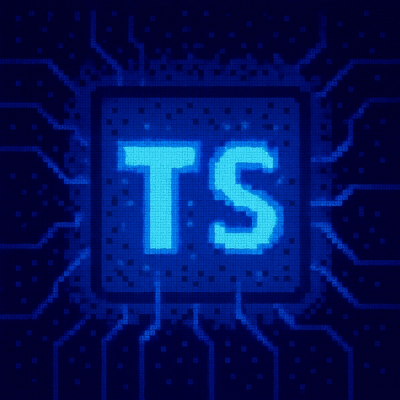
Security News
Critical Security Vulnerability in React Server Components
React disclosed a CVSS 10.0 RCE in React Server Components and is advising users to upgrade affected packages and frameworks to patched versions now.
@azure-iot/configuration
Advanced tools
This library provides support for managing configuration settings in Azure IoT microservices.
1. Install Node
Node can be found here.
2. npm install
This downloads and installs all dependencies required to support this library.
3. npm run build
This builds the project, putting the output into the base (./dist) folder.
This library provides the main Configuration module, which exports the config singleton to create a dictionary-like interface of configuration values. Once initialized, config provides the getSecret, getString and generic get<T> methods, described further below.
Configuration keys are mapped to values from one of four optional providers, in order of preference:
file: JSON file at ./user-config.jsonenv: environment variablesmongo: Mongo DB at the address of the MONGO_URI configuration variabledefault: default values passed as an optional argument to config.initializeThe first provider to return a value other than null is considered authoritative. For example, if both the file and default providers contained a value for the same key, the file provider would be authoritative.
The library also provides support for fetching secret configuration values from KeyVault, using a separate keyVault provider. This credentials to initialize the connection to KeyVault is fetched from the other providers listed below, but once set up, secrets are fetched using a separate getSecret API, not the usual getString and get<T> methods. The examples listed below demonstrate how to read and write secrets from KeyVault.
Configuration variables only need to be set for one configuration provider. Variables can be set for each of the providers in the following ways:
file provider: include the key-value pair in ./user-config.json
env provider: set an environment variable; for non-string values, set the stringified version of the object
mongo provider: either set key-value pairs directly, or use MongoConfiguration.set
default provider: include the key-value pair in the optional defaultValues parameter for config.initialize
keyVault provider: set the secret using the Azure XPlat CLI, provide the values to authenticate with keyvault using the other providers listed below, and then fetch secrets using the getSecret method.
See the Example section for more.
The config singleton (and each provider) implements the IConfiguration interface, which provides the get<T>, getString, and getSecret methods:
get<T>(key): use when you expect the returned value to be anything other than a string; e.g. an object, array, etc.getString(key): use when you expect the returned value to be a stringgetSecret(key): use then you have to fetch secrets from KeyVault.Both methods return null if no value is set for the passed key.
The key parameter can be either a string or an array of strings. If key is a string, get and getString return the associated value. If key is an array, however, get and getString will walk down through a nested object to return the associated value. For example:
// Let's say config.get('KEY') -> { 'fruits': ['apples', 'bananas'] }
let outerValue = config.get('KEY');
let innerValue = config.get(['KEY', 'fruits']);
let missingValue = config.get(['KEY', 'vegetables']);
// This leaves us with:
// outerValue = { 'fruits': ['apples', 'bananas'] }
// innerValue = ['apples', 'bananas']
// missingValue = null
// Fetching secrets:
// let's say config.get("AAD_SECRET") -> { "id": "https://foo.vault.azure.net/secrets/aad-secret"}
const aadSecret = await config.getSecret('AAD_SECRET');
// This will fetch the keyvault secret's URL from other providers,
// fetch the secret value from keyvault, and return an object with
// the following format:
aadSecret = {
id: "https://foo.vault.azure.net/secrets/aad-secret",
value: "<secret value>"
}
configThe config singleton takes a single, optional ConfigOptions argument to its asynchronous initialize call. The ConfigOptions object contains a number of options, including:
defaultValues: an object of key-value pairs which serve as default values---i.e. defaultValues is consulted if all other providers return null; defaults to an empty objectrequiredKeys: an array of variable names which must be assigned a value before returning from the initialization; defaults to an empty arrayconfigFilename: the location of the JSON file provider relative to the calling process's working directory; defaults to ./user-config.jsonlogger: function to call in place of console.logNote: requiredKeys and defaultValues should not share any keys. Sharing keys between these arguments results in unspecified behavior.
This example creates a file provider sourced from ./user-config.json and a mongo provider sourced from the Mongo DB at the location of MONGO_URI.
Let's say we have the following as our ./user-config.json file:
{
"SERVICES": {
"service_1": {
"name": "foo",
"href": "bar.com",
}
},
"MONGO_URI": "mongodb://localhost:27017",
"MONGO_CONFIG_DB": "config-db",
"MONGO_CONFIG_COLLECTION": "config-collection",
"SHARED_KEY": null
}
This means, e.g., config.getString(['services', 'service_1', 'name']) -> 'foo'.
Now, to provision a mongo provider with service_2, we'll choose
config-db (set by the MONGO_CONFIG_DB in the above user-config.json)config-collection (set by the MONGO_CONFIG_COLLECTION in the above user-config.json)Then, in the config-db database, set the config-collection collection's single document to be:
{
"SERVICES": {
"service_2": {
"name": "soap",
"href": "soup.com",
}
},
"SHARED_KEY": "sap"
}
This results in the following:
import {config} from '@azure-iot/configuration';
config.initialize().then( () => {
let mongoUri = config.getString('MONGO_URI');
let servicesObject_1 = config.get('SERVICES');
let service_2 = config.get(['SERVICES', 'service_2']);
let serviceName_2 = config.getString(['SERVICES', 'service_2', 'name']);
let sharedKey = config.getString('SHARED_KEY');
// Now, we have:
// mongoUri = 'mongodb://localhost:27017'
// servicesObject_1 = { 'service_1': { 'name': 'foo', ... } }
// service_2 = { 'name': 'soap', ... }
// serviceName_2 = 'soap'
// sharedKey = 'sap'
});
This example uses the env provider to draw from environment variables, but falls back on the default provider which draws from the defaultValues objects passed to config.initialize.
Remember that the strict order of provider preference is file, env, mongo, and then default.
import {config} from '@azure-iot/configuration';
async function example(): Promise<void> {
// Set an environment variable
process.env['SOUP'] = 'soap';
// Create an object of default values
let defaultValues = {
'FRUITS': ['cherries', 'dates'],
'REQUIRED_KEY': 'bar'
}
// Asynchronously initialize the config service
// with default values; won't return from initializing
// until REQUIRED_KEY has a value
await config.initialize({
requiredKeys: ['REQUIRED_KEY'],
defaultValues: defaultValues
});
// Get values from the config instance
let soup = config.getString('soup');
let fruits = config.get('FRUITS');
}
example().then(
// Now, we have:
// soup = 'soap'
// fruits = ['cherries', 'dates']
);
Initialize the connection to KeyVault with the authentication parameters. Ensure you have the following configuration available in the file/env/mongo/default providers:
KEYVAULT: {
clientId: '<Client ID of the AAD application that has access to the KeyVault>',
certFile: '<Path to the service principal's certificate>',
certThumbprint: '<Thumbprint of the service principal's certificate>'
},
The config.initialize method initializes the keyvault provider only if the KEYVAULT configuration value is present in one of the other providers.
Once initialized, call the getSecret method to fetch the secret value from KeyVault:
// Fetching secrets:
// let's say config.get("AAD_SECRET") -> { "id": "https://foo.vault.azure.net/secrets/aad-secret"}
const aadSecret = await config.getSecret('AAD_SECRET');
// This will fetch the keyvault secret's URL from other providers,
// fetch the secret value from keyvault, and return an object with
// the following format:
aadSecret = {
id: "https://foo.vault.azure.net/secrets/aad-secret",
value: "<secret value>"
}
azure loginazure account set <subscription name>azure keyvault create <vault-name> <resource-group> <location>
azure keyvault secret set <vault-name> <secret-name> <secret-value>
Create RSA cert From https://unix.stackexchange.com/questions/131334/obtain-cer-file-from-pem-file
openssl genrsa -out keyvault.pem 4096
Create celf-signed x509 cert:
openssl req -new -x509 -key keyvault.pem -out keyvault.cacert.pem -days 365
Convert .pem file to .cer:
openssl x509 -inform PEM -in keyvault.cacert.pem -outform DER -out keyvault.cer
In powershell: From https://azure.microsoft.com/en-us/documentation/samples/active-directory-dotnet-daemon-certificate-credential/
$cer = New-Object System.Security.Cryptography.X509Certificates.X509Certificate2
$cer.Import(".\keyvault.cer")
$bin = $cer.GetRawCertData()
$base64Value = [System.Convert]::ToBase64String($bin)
$bin = $cer.GetCertHash()
$base64Thumbprint = [System.Convert]::ToBase64String($bin)
$keyid = [System.Guid]::NewGuid().ToString()
Download manifest of AAD app
Open the manifest if your favorite text editor, and replace the keyCredentials property with your new certificate information from above, using the following schema:
"keyCredentials": [
{
"customKeyIdentifier": "$base64Thumbprint_from_above",
"keyId": "$keyid_from_above",
"type": "AsymmetricX509Cert",
"usage": "Verify",
"value": "$base64Value_from_above"
}
]
Save the edits to the application manifest, and upload it back into Azure AD by clicking Manage Manifest --> Upload Manifest. Note that the keyCredentials property is multi-valued, so you may upload multiple certificates for richer key managemnent.
Get the Object ID of the AAD app's service principal:
> azure ad sp show --spn <aad client id>
info: Executing command ad sp show
+ Getting Active Directory service principals
data: Object Id: <object id of the service principal>
Give the AAD Keyvault app access to the keyvault:
azure keyvault set-policy <vault-name> --object-id <object-id-of-spn> --perms-to-secrets "[\"get\"]"
The below choices in key casing are best practices for the current usages of this library.
foo_bar rather than foo-bar)SCREAMING_SNAKE_CASE (all caps, underscores)snake_case (all lowercase, underscores)The below sample JSON file demonstrates best practices for organizing configuration variables.
{
"PORT": "9001",
"IOTHUB_CONNECTION_STRING": "HostName=...",
"CONSOLE_REPORTING": "both",
"LOG_LEVEL": "warn",
"SERVICES": {
"service_1": {
"href": "http://foo.com"
},
"service_2": {
"href": "http://bar.com"
}
}
}
MONGO_URIIn order to utilize a mongo provider, the MONGO_URI configuration variable must be set by one of the other three providers. If no value is found for MONGO_URI, config.initialize will not attempt to connect to a Mongo DB. A good fallback is to set a default value for MONGO_URI in the default provider (passed as the defaultValues object to config.initialize).
Setting a source. Choosing the database, collection, and document to source for configuration variables is shown below.
MONGO_CONFIG_DB configuration variable; defaults to configMONGO_CONFIG_COLLECTION configuration variable; defaults to configWaiting for variables. Let's say another microservice is inserting variables into the Mongo DB in parallel to the calling of config.initialize. By specifying the requiredKeys argument to config.initialize, the method will wait until all of the keys in requiredKeys have been found by any provider. For example, to wait for the SERVICES key to appear in the mongo provider (and assuming there is no SERVICES key in either the file or env providers), you would initialize config with config.initialize({requiredKeys: ['SERVICES']}).
Shallow reads. Because get and getString are synchronous methods, reads to the mongo provider are necessarily shallow reads. To ensure that the provider has values for certain keys before returning from initialization, utilize the requiredKeys parameter to config.initialize.
get vs getStringget<T> returns file, mongo, and default values as-is, and attempts to JSON.parse top-level values from env; casts the return value as TgetString returns all values as-is, and attempts to throw an error if the value is not a stringEach provider can also be used independently of Configuration. Specifically, the MongoConfiguration class can be used to set values through to a Mongo DB directly, as shown below:
import {MongoConfiguration} from '@azure-iot/configuration';
async function usingProviders() {
let mongoConfig = new MongoConfiguration();
await mongoConfig.initialize({
mongoUri: 'mongodb://localhost:27017'
});
await mongoConfig.set('fruitKey', {'fruits': ['apple', 'banana']});
}
usingProviders().then(
// Now, the config collection of the config DB on the
// localhost connection should contain the fruitKey
// variable
)
FAQs
Configuration support for Azure IoT microservices
We found that @azure-iot/configuration demonstrated a not healthy version release cadence and project activity because the last version was released a year ago. It has 94 open source maintainers collaborating on the project.
Did you know?

Socket for GitHub automatically highlights issues in each pull request and monitors the health of all your open source dependencies. Discover the contents of your packages and block harmful activity before you install or update your dependencies.

Security News
React disclosed a CVSS 10.0 RCE in React Server Components and is advising users to upgrade affected packages and frameworks to patched versions now.

Research
/Security News
We spotted a wave of auto-generated “elf-*” npm packages published every two minutes from new accounts, with simple malware variants and early takedowns underway.

Security News
TypeScript 6.0 will be the last JavaScript-based major release, as the project shifts to the TypeScript 7 native toolchain with major build speedups.